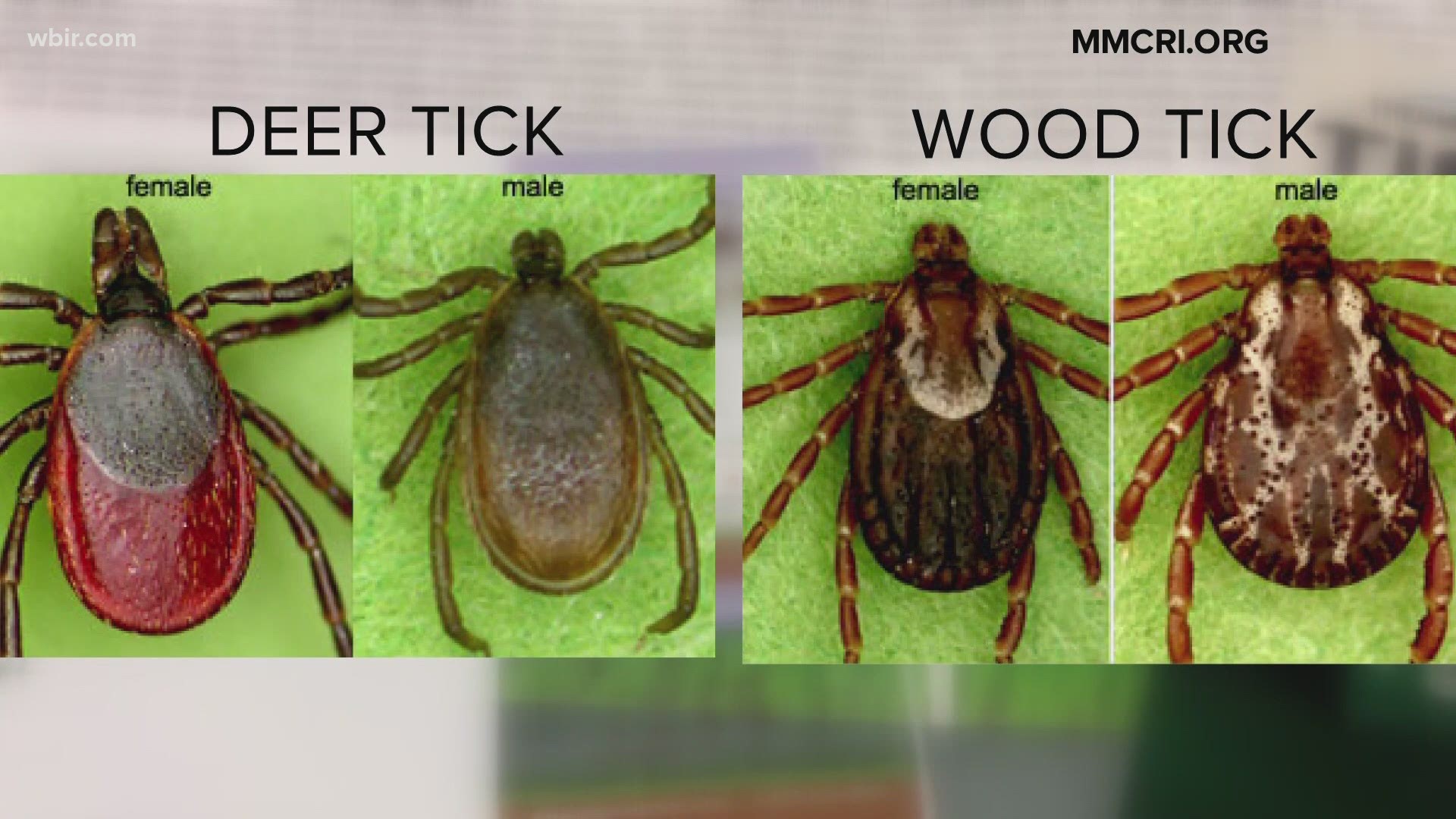KNOXVILLE, Tenn. — Summer is here! As many Tennesseans head outdoors after a year inside, ticks are also expected to make a comeback. While ticks are around all year long, they are most active during the warm months between April and September.
Ticks can be more than just annoying pests. They are also carriers for various diseases. Some of these diseases include Lyme disease and Rocky Mountain Spotted Fever, and both people and pets can be affected.
Before you decide to hit the trails, here are a few CDC-approved tips to protect yourself and your four-legged friends from the persistent buggers.
First, ticks can be anywhere — even in your own backyard! Ticks tend to live in wooded or bushy areas, so always be aware when going outdoors, even if you're just walking the dog. When going on nature trails, be sure to stay on the path and avoid venturing into bushy areas.
To avoid ticks in your backyard, make sure to mow regularly and remove any excess leaves as ticks love to make these areas their home. Also, get rid of any old furniture or mattresses that might have been left out in the yard. If you have wood outside, make sure to stack them neatly and in a dry place.
If you plan on hiking or going on a camping trip, try treating your clothes with products that contain 0.5% permethrin. Permethrin is effective at keeping ticks away and can remain effective even after repeated washings.
Make sure to follow the instructions and treat your clothes in well-ventilated areas, or even outside. Alternatively, you can also purchase clothing and gear that have already been treated with permethrin.
The CDC recommends using EPA-approved insect repellents that contain DEET, picaridin, IR3535, Oil of Lemon Eucalyptus (OLE), para-menthane-diol (PMD), or 2-undecanone. The CDC also urges parents to not use products with OLE or PMD on children under the ages of three.
For pets, it's recommended that you speak with your veterinarian about prevention treatments and tickborne illnesses that can be problematic for your pet.
When you return from your outdoor adventures, do a thorough examination of both yourself and your pet. Look over clothing and gear to make sure you don't have any lingering passengers.
When examining yourself, try using a mirror and be sure to check everywhere —even tough to reach areas. This can include behind the knees, in and around the ears, and the belly button area.
Similarly, do the same for your pet and check areas like behind the tail, between the toes, and under their collar.
The CDC also recommends showering within two hours of returning home to reduce the risk of Lyme disease and other tickborne illnesses.
If you do find a tick, there's no need to panic, but it is important to remove it as soon as possible. To learn how to safely remove a tick, check out the CDC guide here.
Once you identify a tick, keep an eye either on yourself or your pet as it may take time for symptoms to show depending on the disease. It may take days or even a month before symptoms start to occur.
While the diseases can vary, most symptoms are largely the same. Be on the lookout for fevers or chills, aches and pains, and rash start to develop.
For more information about ticks, check out the CDC's webpage.

